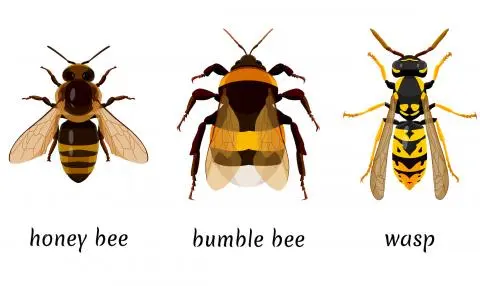Contents
The photo of insects clearly demonstrates the differences between a bee and a wasp, they must be carefully studied by urban residents before leaving for nature. Both insects sting painfully, and their bites can cause allergic reactions. It is worth knowing their habits, places where they can be found more often in order to protect yourself and children from attack. In addition, both species differ in varying degrees of aggressiveness.
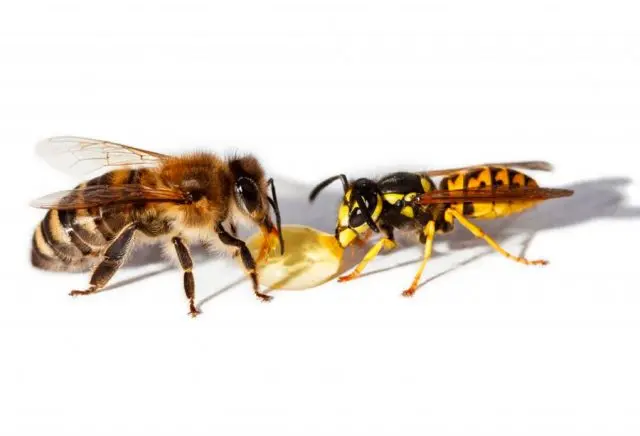
What is the difference between a wasp and a bee
It is not so easy for a person living in a big city to immediately distinguish between two completely different flying insects. Similar in appearance, emit a buzz. Moreover, there are almost no differences in the size of common species found in the European part of the country. At a cursory glance, their coloring may also seem the same.
The table shows the obvious differences between a bee and a wasp:
What’s the Difference | Bee | Wasp |
Color | Subdued: alternating honey yellow and black stripes on the abdomen | Bright: intense yellow stripes on the body alternate with rich black |
body contours | Round-oval shape of the abdomen, near the contours are blurred due to the villi on the body | The body is smooth, elongated, divided into 2 unequal parts by a narrow bridge between the chest and the pointed abdomen, the contours are clear |
Where do they meet | On decorative flowers, on flowers of trees, horticultural crops, near water containers and water taps located outside in the countryside | On ripe sweet fruits of fruit trees, rotten vegetables; on any products exposed to the street, including raw meat, fish, food waste, even rotten |
Behavior | They sting only in case of a threat to their own life, when approaching the hive | Aggressive, can sting without a clear threat to life |
Bite nature | Stings once, the sting remains in the wound | Can sting several times, wasp sting pulls |
Bee and wasp: differences
There are many differences between these insects, starting with their appearance, their way of life and behavior.
How to distinguish a wasp from a bee externally
The most striking sign of the difference between the two insects is the saturation of their striped color. The expressive contrast of two intense colors that alternate on the body of the wasp, black and yellow, makes a person immediately alert on a subconscious level.
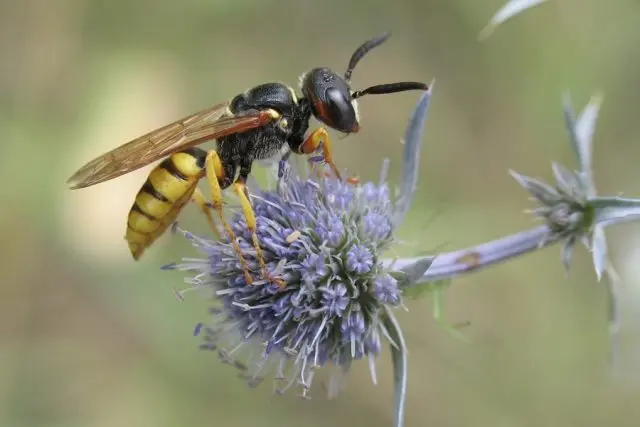
The color of the bee is softer, yellow-brown, there is no sharp transition between the calm yellow and black shades of the stripes on the abdomen. As you can see in the photo, a bee differs from a wasp in a rather shaggy cover. In part, this impression is achieved due to the thick villi on the whole body and on the legs of the bee. The main natural task of a beneficial insect is to collect more flower pollen with the help of its “shaggyness” and transfer it to another flower for pollination.
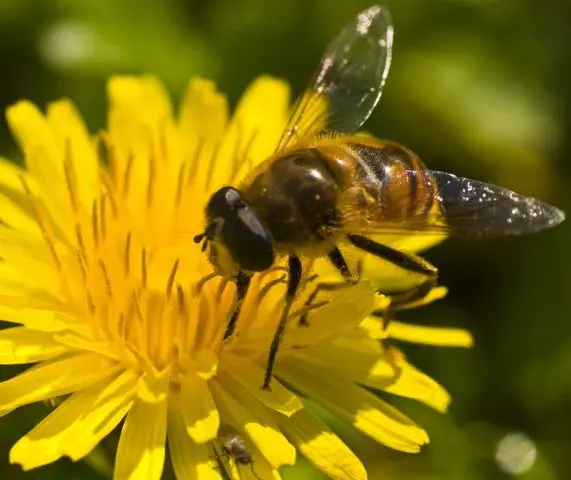
The difference in appearance between bees and wasps is easy to see from the shape of their bodies. Due to the large number of villi, the body of the honey toiler does not have sharply defined contours. The smooth cover of the wasp clearly outlines its predatory, aggressive natural color with a pointed abdomen.
There are also differences in the structure of the wings, the color of the legs, but they are considered only by specialists. When macro photography in the photo of a wasp and a bee, the difference is seen in that the second has special formations on the paws where pollen accumulates, the so-called baskets. The honey-bearing insect carries the result of labor to the hive for the common good.
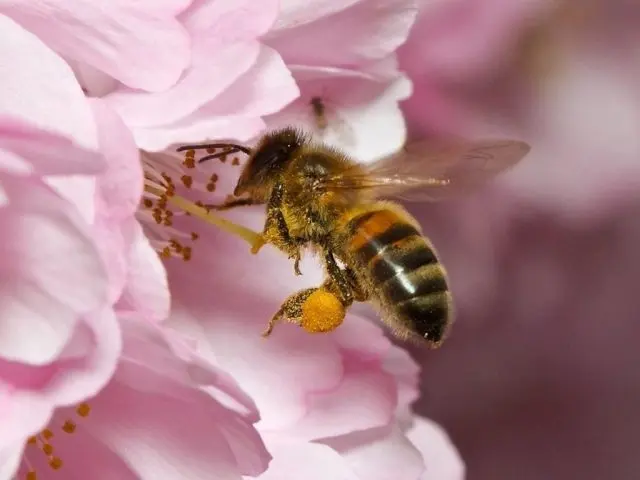
What is the difference between a wasp and a bee: a comparison of lifestyle
These representatives of the Hymenoptera order, the suborder of the stalked bellies, as entomologists define them, have many species. The most famous bees:
- melliferous public;
- single.
Among the wasps there are the same varieties. The above general characteristic applies to most species of both representatives of the Hymenoptera order. The difference between social species and solitary individuals is that the former have a uterus for raising offspring. She is cared for by the family, where each member has their own tasks and responsibilities. And other species, solitary, reproduce independently. But all bees, regardless of their social organization, work to pollinate various plants. In bee “management” up to 80% of all types of flora on the planet. This is their purpose.
Bees build honeycomb nests in trees, in rock crevices, and settle in abandoned rodent burrows on the ground. All chambers are covered with wax from the inside. This substance is a bright difference, with the help of which you can immediately understand which insect’s nest was found. Man has learned to select honey, wax, pollen for his needs.

In colonies, the wasp takes care of itself. Aggressive insects often settle near human habitats: in gardens, small holes under roofs. The nests are also honeycomb-shaped, but built from chewed grass and wood particles. Buildings are usually grey.

Wasp and bee: nutritional differences
Insects have a completely different diet. The bees feed their larvae and feed themselves on pollen and nectar. The difference between a bee and a wasp is that the latter, being a predator, feeds its larvae with protein food – caterpillars, other insects, which benefits gardens. Her diet also includes flower nectar, juice of fruits and vegetables, any food waste, including spoiled protein, carrion.
Do wasps give honey
Some types of wasps on the American continent are able to collect honey. But wax is not produced.
Wasps and bees: the difference in stings
Bites from stinging insects are equally painful and can cause serious problems for people with allergies. Especially severe consequences are in the form of anaphylactic shock. It has been noticed that more often insects sting people who use perfumes and cosmetics. Both species perceive these chemical odors as an immediate threat to themselves. Often they attack people who are sweaty after exercise or with damp skin after swimming. Experts also argue that allergy sufferers are more likely to be attacked, unlike people who do not suffer from this disease.
The differences from a bee sting from a wasp in the photo are barely noticeable:
- swelling occurs, the magnitude of which depends on the particular reaction of the organism of a particular person;
- the area where the poison spreads turns red.
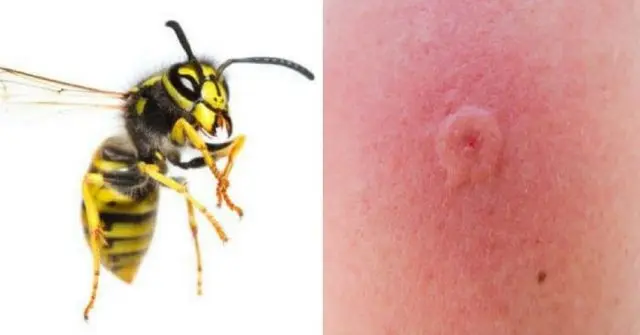
The difference in the chemical composition of the substance injected by insects:
- the wasp has a poison with an alkaline reaction, so to neutralize it, it is enough to rub the wound with vinegar;
- bee venom is characterized by an acidic reaction; after a bite, they are saved by rubbing the sore spot with ordinary soap or alcohol.
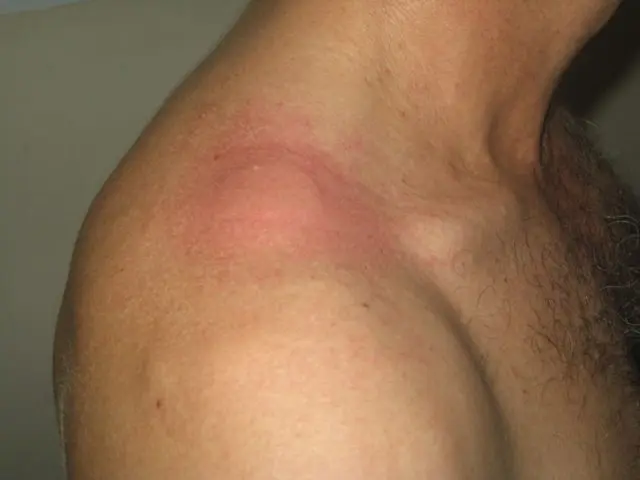
Differences between the sting of a wasp and a bee
The defense tool of both insects is similar, but there are some differences. Carefully studying from the pictures how the wasp differs from the bee, you can see the smooth sting of the first, with small notches at the end. An annoying insect will sting once, but can do it again, unlike other species. The bee sting is strongly serrated, large teeth are directed upwards.
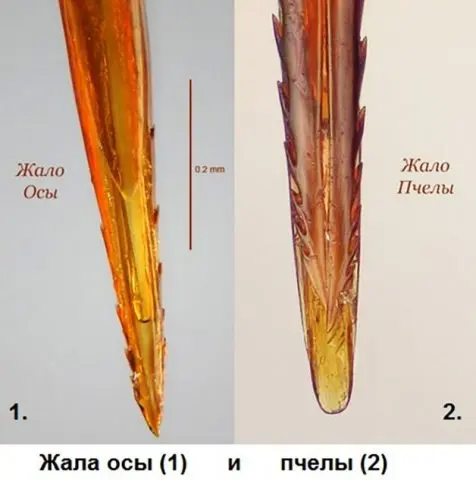
Why does a bee die after it stings
If a bee, protecting itself or its hive, drives its stinger into the elastic tissue of the body, it is difficult for it to pull out its weapon of attack because of its teeth. Trying to free itself, the insect breaks away from the sting, but leaves some of its internal organs with it. This moment, shown in the photo, is the main difference between a wasp and a bee.
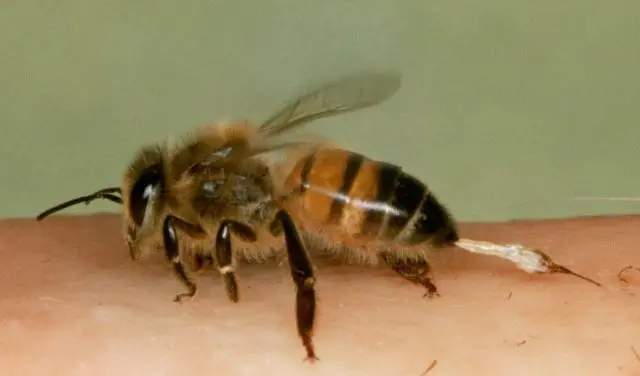
How long does a bee live after being bitten
The lifespan of a bee after a sting depends on how much damage it has received. It happens that the insect will live only a few minutes. Sometimes 1,5-3 days. If the bees attack insects that have a hard chitinous cover that is not elastic, it takes out the sting and remains alive. Although a more detailed study of the life of both species and their differences casts doubt on the mandatory happy outcome of such an attack.
How to tell a bee from a wasp
Summing up the differences between wasps and bees, it is important to point out that after the first meeting, any city dweller recognizes both. It is necessary to study and familiarize children well with how to distinguish a wasp from a bee using a photo. The first thing that will catch your eye is the bright color of the buzzing insect. Alternating black and lemon stripes, well-defined body contours with a predatory pointed end will immediately signal that a wasp is flying around. The musical ear will also distinguish differences in buzzing, although the sounds are very similar. A wasp can aggressively curl around a person if it is attracted to some kind of food smell.
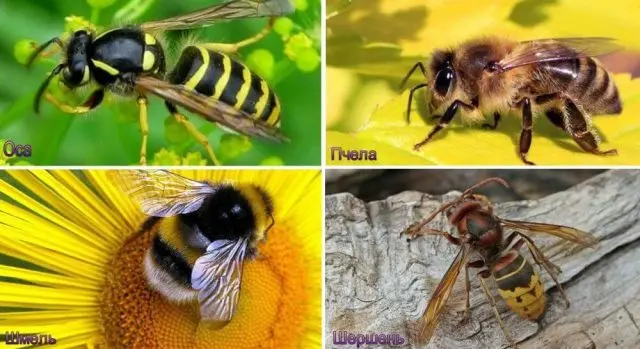
Representatives of the bee family are more peaceful and will react violently to the irritating smell from people only near the hives. A bee that works on a flower will never be distracted from its work, unless it is specifically touched. The behavior of the wasp is more unpredictable, and it sometimes breaks away from getting food, threatening a person. Knowing well what a bee and a wasp look like, you can peacefully exist with them without dire consequences in the form of bites.
The main difference is the color of the bee, a mixture of muted yellow-black tones, not so defiant. Bumblebees and hornets are much larger in size.
Conclusion
The differences between a bee and a wasp photo taken during macro photography will help determine the type of insect. Bees are more common on flowers, wasps love ripe and sweet fruits, flock to the smell of fresh fish and meat. In no case should you explore the nest of Hymenoptera, which will fiercely defend it. When traveling to nature, it is better to give up perfumes and give preference to soft clothes.










